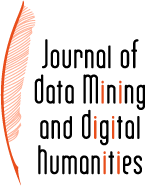 |
Sergio Torres Aguilar ; Pierre Chastang ; Xavier Tannier - Automatic medieval charters structure detection : A Bi-LSTM linear segmentation approach
jdmdh:8646 - Journal of Data Mining & Digital Humanities, 30 octobre 2022, 2022 - https://doi.org/10.46298/jdmdh.8646- 1 École Nationale des Chartes
- 2 École nationale des chartes
- 3 Versailles Saint-Quentin-en-Yvelines University
- 4 Université de Versailles Saint-Quentin-en-Yvelines
- 5 Sorbonne University
- 6 Laboratoire d'Informatique Médicale et Ingénierie des Connaissances en e-Santé
This paper presents a model aiming to automatically detect sections in medieval Latin charters. These legal sources are some of the most important sources for medieval studies as they reflect economic and social dynamics as well as legal and institutional writing practices. An automatic linear segmentation can greatly facilitate charter indexation and speed up the recovering of evidence to support historical hypothesis by the means of granular inquiries on these raw, rarely structured sources. Our model is based on a Bi-LSTM approach using a final CRF-layer and was trained using a large, annotated collection of medieval charters (4,700 documents) coming from Lombard monasteries: the CDLM corpus (11th-12th centuries). The evaluation shows a high performance in most sections on the test-set and on an external evaluation corpus consisting of the Montecassino abbey charters (10th-12th centuries). We describe the architecture of the model, the main problems related to the treatment of medieval Latin and formulaic discourse, and we discuss some implications of the results in terms of record-keeping practices in High Middle Ages.
